-
Characterization and risk assessment of microplastics accumulated in sediments and benthic molluscs in the mangrove wetlands along the south-west coast of India Mar. Pollut. Bull. (IF 5.3) Pub Date : 2025-04-13
Kuttanelloor Roshni, Chelapurath Radhakrishnan Renjithkumar, Radhakrishnan Amal, Suja Purushothaman DevipriyaIn the present study, occurrence and characteristics of microplastics in mangrove sediments and benthic molluscs viz., black clam (Villorita cyprinoides), yellow clam (Meretrix casta), mangrove horn snail (Telescopium telescopium) and brackish water snail (Neripteron violaceum) were studied from mangrove habitats of Vembanad Lake, the largest estuary and a Ramsar site on the south-west coast of India
-
Appraisal of groundwater suitability for drinking and irrigation purposes in highly vulnerable coastal area of Bangladesh Mar. Pollut. Bull. (IF 5.3) Pub Date : 2025-04-13
Md. Swadhin Hossain, Imran Ud Din, Ashfaqur Rahman, Mongurul Islam, Wajid AliGroundwater contamination is a significant threat to water security in Bangladesh, especially in coastal areas influenced by salinity intrusion and geogenic pollutants. The study has collected 48 groundwater samples and analyzed 16 water quality parameters to assess the suitability of groundwater for drinking and irrigation purposes in a highly vulnerable coastal area of Bangladesh. The Canadian Council
-
Ecological alterations of promenade lighting on crustacean assemblage: A real-scale study Mar. Pollut. Bull. (IF 5.3) Pub Date : 2025-04-13
Pablo Saenz-Arias, Alejandro Irazabal, María José Reyes-Martínez, José Manuel Guerra-García, Juan Moreira, Carlos Navarro-BarrancoCoastal shallow habitats are greatly exposed to artificial light at night (ALAN). Although the ecological impacts of light pollution have been tested in some marine species, few studies have been conducted at assemblage level. Our study is a real-scale approach to the effects of ALAN from seaside promenade lighting to the crustacean assemblage of the water column. Beach lighting of a coastal town remained
-
Effects of microplastics and heavy metal stress on the growth and physiological characteristics of pioneer plant Avicennia marina Mar. Pollut. Bull. (IF 5.3) Pub Date : 2025-04-13
Guoli He, Huifeng Xie, Baoyi Tan, Mingqi Chen, Zijie Wu, Zhenqing Dai, Ruikun Sun, Lei He, Chengyong LiMangrove plants grow in muddy and swampy areas where the land and sea meet and are threatened by various pollutants. In the present study, Avicennia marina (Forsk.) Vierh. (A.marina), the pioneer species in mangrove, was selected as model plant. A composite pollution model of microplastics (polypropylene [PP], polyethylene [PE], and polyamide [PA]) and multiple heavy metals (Cr, Cu, Pb, Zn, Cd, Mn
-
Distinctive patterns and low concentrations of persistent organic pollutants in Northwestern Pacific killer whales (Orcinus orca) Mar. Pollut. Bull. (IF 5.3) Pub Date : 2025-04-13
Derek C.G. Muir, Aaron T. Fisk, Olga A. Filatova, Ken Drouillard, Nargis Ismail, Olga Shpak, Ivan FedutinPersistent organic pollutants (POPs) in killer whale (Orcinus orca) populations in the Northwestern Pacific Ocean are much less studied compared to the Northeastern Pacific and North Atlantic populations. The objective of this study was to address that knowledge gap by analysis of biopsy samples obtained as part of studies of killer whale feeding and habitat use in coastal waters of the Russian Far
-
Turning riprap into reefs: Integrating oyster shells into shoreline armouring Mar. Pollut. Bull. (IF 5.3) Pub Date : 2025-04-13
Thea E. Bradford, Chi C. Lo, Juan Carlos Astudillo, Rainbow W.S. Leung, Charlene Lai, Jay J. Minuti, Carmen K.M. Wong, Stephen J. Hawkins, Rebecca L. Morris, Kenneth Mei Yee LeungBoulder seawalls constructed with granite riprap for shoreline armouring lack habitat complexity, leading to lower marine biodiversity than natural rocky shores. Baskets of live oysters and cured oyster shells, and strings of cured shells laid on concrete blocks were installed on ripraps in Hong Kong, China with an aim to enhance biodiversity and ecosystem functioning towards that of a natural rocky
-
A best practice framework for assessing plastic ingestion in marine turtles Mar. Pollut. Bull. (IF 5.3) Pub Date : 2025-04-13
Daniel González-Paredes, Emily Duncan, Brendan J. Godley, Helene Marsh, Mark HamannThe ingestion of plastic debris has been reported in all seven marine turtle species, affecting vital processes throughout their entire life cycle and key habitats. Consequently, this emerging threat has been recognized as a priority conservation concern. The potential health impacts range from cryptic sublethal effects to severe injury and death. A comprehensive understanding of these impacts and
-
Legacy and emerging per- and polyfluoroalkyl substances in eggs of yellow-legged gulls from Southern France Mar. Pollut. Bull. (IF 5.3) Pub Date : 2025-04-13
William Jouanneau, Thierry Boulinier, Dorte Herzke, Vladimir A. Nikiforov, Geir W. Gabrielsen, Olivier ChastelMore than 70 years of industrial production of per- and polyfluoroalkyl substances (PFAS) have resulted in their ubiquitous presence in the environment on a global scale, although differences in sources, transport and fate lead to variability of occurrence in the environment. Gull eggs are excellent bioindicators of environmental pollution, especially for persistent organic pollutants such as PFAS
-
Olivine-induced seasonal dynamics of eukaryotic microalgal and bacterial assemblages in mid-latitude nearshore marine ecosystems Mar. Pollut. Bull. (IF 5.3) Pub Date : 2025-04-13
Hongwei Ren, Yubin Hu, Lianbao Zhang, Xianzhe Gong, Liwen Zheng, Jihua LiuOcean alkalinization, especially through olivine addition, represents a promising strategy for reducing atmospheric CO2 levels. The addition of olivine may have seasonal impacts on marine microalgal and bacterial communities, which have not been studied yet. In this study, controlled laboratory experiments were conducted in spring and autumn to measure the responses of microalgal and bacterial communities
-
Effects of ultra-violet filters oxybenzone (benzophenone-3) and 4-methylbenzylidene camphor on different life-history traits of the copepod Acartia tonsa Dana Mar. Pollut. Bull. (IF 5.3) Pub Date : 2025-04-13
Marco Picone, Silvia Del Vecchio, Maria Pirvu, Marco Vecchiato, Annamaria Volpi GhirardiniThe UV filters 2-hydroxy-4-methoxybenzophenone, or benzophenone-3 (BP3), and 4-methylbenzylidene camphor, or enzacamene (4-MBC), are recognised as toxicants that might impair different life-history traits in marine invertebrates and threaten the resilience of critical ecosystems such as coral reefs. Their effects on different life-traits of the calanoid copepod Acartia tonsa were tested, including
-
Water and sediment characteristics in the Avicennia marina environment of the Arabian Gulf: A review Mar. Pollut. Bull. (IF 5.3) Pub Date : 2025-04-11
Kaiprath Puthiyapurayil Haseeba, Valliyil Mohammed Aboobacker, Ponnumony Vethamony, Jassim Abdulla Al-KhayatMangroves are halophytic woody plants inhabiting the sea-land confluence of tropical and subtropical regions, influenced by marine and terrestrial factors. Among various others, Avicennia marina is the only mangrove species that thrives the extreme climatic conditions of the Arbian Gulf (the Gulf). Highly varying temperatures, hyper salinity, freshwater scarcity and anthropogenic pressures have resulted
-
Microplastic pollution in the water and sediment of the Karnaphuli River, Bangladesh: An ecological risk assessment Mar. Pollut. Bull. (IF 5.3) Pub Date : 2025-04-11
Mumtahina Jui, Md. Sagor Miah, Md. Hadiul Islam, Md. Iqbal Sarwar, Mohammad Moniruzzaman, Razia Sultana Ankhy, Priyanka Dey Suchi, Md. Shoffikul IslamMicroplastics (MPs) have emerged as a new global pollutant, endangering marine ecosystems. Nonetheless, research on MP pollution in Bangladesh's estuaries and coastal environments is scare. Here, we carried out the experiment to evaluate the spatial and temporal variations of MPs along both bank of the Karnaphuli River in Chattogram city of Bangladesh, encompassing nearly all locations where the river
-
Shellfish-macroalgae IMTA maintaining water environment stability: A case study of Crassostrea gigas and Gracilaria lemaneiformis IMTA in Sanggou Bay of China Mar. Pollut. Bull. (IF 5.3) Pub Date : 2025-04-11
Ruixue Tong, Rong Zhang, Jinghui Fang, Yitao Zhang, Jialei Xu, Xiaowen Zhang, Yumeng XieShellfish and macroalgae are usually known as environmental remediation species in aquaculture systems. However, the environmental issues are frequently found in shellfish and macroalgae large scale monoculture areas. Although shellfish and macroalgae IMTA might mitigate adverse effects of monoculture, the relationships among cultured organisms, plankton and environmental factors are unclear. This
-
Stress in the City: Disentangling multi-stressor effects on an urbanized coral in a changing ocean Mar. Pollut. Bull. (IF 5.3) Pub Date : 2025-04-10
Caroline F. Ianniello, Grace Beery, Ta-Hung (Denny) Chen, Ethan Deyle, Wendy Heiger-Bernays, Itasca Motter, Justin S. McAlister, Randi D. RotjanReducing the negative impacts of global change on organismal physiology is a critical area of scientific investigation in the Anthropocene. Marine coastal ecosystems that exist downstream from urban centers are often subjected to excess nutrients, pathogens, and chemicals via runoff, which can harm organismal function, and may interact with climate change stress. To simultaneously investigate the individual
-
A “short blanked” reality: The challenge to control sun coral invasion in a large no-take marine protected area over a decade of adaptive management Mar. Pollut. Bull. (IF 5.3) Pub Date : 2025-04-10
Sergio A. Coelho-Souza, Ludmilla N. Falsarella, Kelen L. Leite, Heitor M. Meira, Carolina F. Candido, Maria Soledad LopezMarine protected areas (MPAs) should be prioritized for management actions against bioinvasions. Controlling underwater invaders is particularly challenging because of the need for specific tools and methodologies with long-term investment. Since 2013, a Brazilian no-take MPA has adopted the adaptive management of sun coral (Tubastraea spp.). The historical dataset of sun coral removal in the Alcatrazes
-
Baseline assessment of microplastics pollution in beach sediments along tropical coastline (Kuala Langat, Malaysia) Mar. Pollut. Bull. (IF 5.3) Pub Date : 2025-04-10
Sarva Mangala Praveena, Nuremilia Affarina Ahmad Pakharuddin, Ayu Lana Nafisyah, Subramaniam Karuppannan, Arumugam SundaramanickamThis study examines the occurrence, physical characteristics (size, colour, and shape), and polymer compositions of microplastics (MPs) in beach sediments along the Kuala Langat coastline impacted by tourism and fishing activities. Microplastics particle were isolated using density separation, characterized using microscopy and Spectroscopy technique. Microplastic concentrations ranged from 0.01 to
-
Bacteria associated with Karenia mikimotoi in modulating its ichthyotoxicity Mar. Pollut. Bull. (IF 5.3) Pub Date : 2025-04-09
Winnie Lam, Thomas Chun-Hung Lee, Nora Fung-Yee Tam, Steven Jing-Liang Xu, Fred Wang-Fat LeeHarmful algae are often associated with bacteria but whether their toxicity is affected by bacteria is unclear. This study elucidated roles of bacteria associated with Karenia mikimotoi (KMHK) in modulating its ichthyotoxicity. Results revealed KMHK ichthyotoxicity increased in the order of xenic (with algal-associated bacteria) < axenic (free from associated bacteria) < “re-xenic” cultures (with bacterial
-
Microplastic abundance and characteristics in bivalves from Tam Giang-Cau Hai and O Loan Lagoons, coastal regions in Central Vietnam: Implication on human health Mar. Pollut. Bull. (IF 5.3) Pub Date : 2025-04-09
Tran Thi Ai My, Nguyen Duy Dat, Nguyen Quoc Hung, Ton Thi Thanh Thuy, Phan Thi Thuy Hang, Nguyen Duy LuuFour common bivalves, including white clam (Meretrix lusoria), lined clam (Paratapes undulatus), oysters (Crassostrea gigas), and green mussels (Perna viridi), which are commonly consumed in Central Vietnam, were collected from Tam Giang-Cau Hai and O Loan Coastal Lagoons. The samples were investigated for the presence of microplastics (MPs) in their tissues. The average number of MPs determined in
-
Aquaculture in the crossroad of microplastic contamination Mar. Pollut. Bull. (IF 5.3) Pub Date : 2025-04-09
Maria João Bebianno, Michael Manthopoulos, Justine Nathan, Sónia Cristina, Laura Ribeiro, Ravi Luna-Araújo, John Icely, Bruno D.D. Fragoso, Delminda MouraPlastic pollution threatens life and human health, with microplastics (MP) linked to seafood consumption. MPs enter aquaculture through the environment and from aquaculture gear. During aquaculture production, plastic is used in nets and sacks for the growth process and in collecting and processing so it becomes important to expand the knowledge about how much MPs are present in seafood. The aim was
-
Underwater radiated noise characteristics of small vessels - An analysis of the HearMyShip database Mar. Pollut. Bull. (IF 5.3) Pub Date : 2025-04-09
Mark Shipton, Juraj Obradović, Nikola Mišković, Roee DiamantUnderwater Radiated Noise (URN) from vessels has become a significant area of focus in the marine pollution research agenda due to its potentially adverse effects on marine life. URN monitoring and mitigation efforts have been directed primarily toward large commercial vessels (e.g., container ships), which has led to the accumulation of extensive data through standardized measurements. However, this
-
Different responses of phytoplankton taxa to water N and P inputs in a freshwater wetland: A mesocosm study Mar. Pollut. Bull. (IF 5.3) Pub Date : 2025-04-08
Wenjing Ma, Jiayin Feng, Jinhua Zhang, Hongpeng Wang, Yunpeng Guo, Yaru Lyu, Chao Wang, Zixuan Yang, Mengyu Yan, Jingyi Ru, Xueli Qiu, Shiqiang WanThe intensification of human activities has led to a large amount of nitrogen (N) and phosphorus (P) inputs into water, resulting in an increase in nutrient load and an imbalance of N and P stoichiometric ratio in wetlands. However, whether and how water eutrophication influences phytoplankton diversity, community composition, and biomass remain largely unclear. As part of a two-year (2022–2023) field
-
Rayon fibre rope: A biodegradable alternative for marine use? Mar. Pollut. Bull. (IF 5.3) Pub Date : 2025-04-08
Alexandre Chamley, Wilfried Troalen, Christophe Baley, Louis le Gué, Floriane Freyermouth, Peter DaviesRayon fibres are well-known materials that were primarily utilised as reinforcement in tyres. Today these materials are perceived as a promising substitute for synthetic fibres, exhibiting good mechanical characteristics and biodegradation in many environments. This paper investigates their potential use for marine structures. It first describes the tensile properties of the fibres and their derived
-
Evolutionary insights into adaptation of hemocyanins from deep-sea hydrothermal vent shrimps Mar. Pollut. Bull. (IF 5.3) Pub Date : 2025-04-08
Hyeongwoo Choi, Ok-Hwan Yu, Seong-il EyunDeep-sea hydrothermal vent shrimps inhabit environments with low oxygen levels and may even be exposed to hypoxic conditions. In response, their respiratory pigment, hemocyanin (Hc) may undergo molecular adaptations to enable them to survive in such extreme ecosystems. Therefore, we sampled four Alvinocarididae species from hydrothermal vents in the northern Central Indian Ridge and two types of Hc
-
Impact of seasonal variations on microplastic accumulation and characteristics in sandy beaches of Sichang Island, the inner Gulf of Thailand Mar. Pollut. Bull. (IF 5.3) Pub Date : 2025-04-08
Pathompong Vibhatabandhu, Patcha Leelakun, Anutsara Yottiam, Seelawut Damrongsiri, Yotwadee Hawangchu, Nuta Supakata, Vorapot Kanokkantapong, Sarawut SrithongouthaiMicroplastics (MPs) are pervasive environmental pollutants whose fate, transport, and ecological impacts require clarification. This study examines the abundance and characteristics of MPs (16–5000 μm) in sandy beach sediments on Sichang Island, the inner Gulf of Thailand, during the dry season and after a four-month wet season. On the western beach, exposed to monsoon winds and currents, MP abundance
-
High-resolution DNA metabarcoding of modern surface sediments uncovers a diverse assemblage of dinoflagellate cysts in the Pacific and Arctic Oceans Mar. Pollut. Bull. (IF 5.3) Pub Date : 2025-04-08
Junyue Wang, Qian Liu, Shuning Huang, Kenneth Neil Mertens, Vera Pospelova, Xin Shen, Haifeng GuResting cysts of dinoflagellates can persist in sediments, seeding harmful algal blooms (HABs). A DNA metabarcoding approach was employed, targeting the large subunit ribosomal (LSU D1–D2) and the internal transcribed spacer (ITS1) to investigate the diversity and biogeography of dinoflagellate cysts from the South China Sea to the Chukchi Sea. The LSU and ITS1 datasets identified 196 and 118 species
-
Metals in the coastal systems of Abaco Island, The Bahamas following Hurricane Dorian Mar. Pollut. Bull. (IF 5.3) Pub Date : 2025-04-08
Yanila Salas-Ortiz, Hunter Nielsen, Morgan R. Hurst, Audrey Orzech, Mark Kelinske, Makeda Serju, Katharine Schlachter, Abigail Bockus, Diane Claridge, Charlotte Dunn, Phoebe Zito, Stephanie K. ArcherHurricanes can introduce metals into coastal systems. Unfortunately, metal concentrations are unknown in many hurricane prone locations. Here we measured vanadium, chromium, manganese, iron, cobalt, nickel, copper, zinc, arsenic, molybdenum, cadmium, antimony, barium, lead, and uranium in surface water, sediments, and seagrass (Thalassia testudinum) collected in seagrass beds and marinas around The
-
Dispersion effectiveness of petroleum oils in low and hypersaline waters Mar. Pollut. Bull. (IF 5.3) Pub Date : 2025-04-08
Robyn N. Conmy, Devi Sundaravadivelu, Blake A. Schaeffer, Brian Robinson, Tom King, Robert GrosserChemical dispersant formulations typically provide maximum oil dispersion in waters between 30 and 40 ppt (parts per thousand) salt content, which encompasses typical 35 ppt ocean salinity. Ocean salinity can vary locally, from very low values due to freshwater river inflows or ice melt, to extremely high values during freeze up periods or within natural brine pools. In this study, the influence of
-
Combined effects of food and temperature on the chronic toxicity of polyethylene terephthalate microplastic fragments in Manila clam Ruditapes philippinarum Mar. Pollut. Bull. (IF 5.3) Pub Date : 2025-04-08
Jinyoung Song, Hyeonji Nam, Asna Ali, June-Woo ParkMicroplastics (MPs) have raised concern because of their detrimental toxicity to a diverse aquatic organisms, who are further threatened by global warming. The Manila clam Ruditapes philippinarum is one of the most consumed bivalve worldwide. In this study, the influence of food (absence and presence of algae) and temperatures (19 and 23 °C) on the chronic toxicity of polyethylene terephthalate (PET)
-
Interaction of dispersed oil with zebrafish fecal pellets in baffled flask: A novel insight into the marine-oil snow formation Mar. Pollut. Bull. (IF 5.3) Pub Date : 2025-04-08
Yue Yu, Deqi Xiong, Zhixin Qi, Wanran Li, Yaya An, Zhennan WangThe formation and sinking of marine oil snow are associated with interactions between dispersed oil and diverse marine particles. Despite this insight, the role of fish fecal pellets in mediating oil sedimentation remains a research gap. This study used various crude oils and zebrafish fecal pellets to explore the dynamic formation of oil-fecal pellet aggregates (OFPAs). We also investigated the effect
-
Evaluating the environmental impact of leaking WW2 shipwrecks: A closer look at the VRAKA and AmuCad decision support tools Mar. Pollut. Bull. (IF 5.3) Pub Date : 2025-04-08
John Aasulf Tørnes, Geir Petter NovikOf the thousands of shipwrecks originating from WW2, many still contain munitions or chemical warfare agents that still pose a substantial risk to the environment and societal safety. Initially, it was believed that the ammunition would slowly become harmless over time, leading post-war governments to dispose of millions of tonnes of surplus ordnance by dumping it at sea or loaded onto derelict vessels
-
Protective role of medium-concentration selenium nanoparticles against high salinity-induced oxidative stress in Crassostrea hongkongensis gills and hepatopancreas Mar. Pollut. Bull. (IF 5.3) Pub Date : 2025-04-05
Yuchen Lu, Hongyan Li, Jie Lu, Tuo Yao, Shengli Fu, Qingheng Wang, Lingtong YeThis study investigated the effects of selenium nanoparticles (Se NPs) on the physiological responses of Crassostrea hongkongensis during high salinity exposure, which threatens this commercially important species. Oysters were pretreated with Se NPs (0, 0.4, 4, and 40 μg/L) for 14 days, followed by high salinity (30 psu) exposure for 7 days. Antioxidant, metabolic, and immune parameters were analyzed
-
Microplastic contamination alters microbial community in commercially important bivalves, Geloina expansa, Anadara cornea, and Meretrix meretrix from tropical waters Mar. Pollut. Bull. (IF 5.3) Pub Date : 2025-04-05
Amirah Alias, Khairul Azmi Muhamad Amin, Loy See Heng, Siti Mariam Mohamad Nor, Wan Bayani Wan Omar, Yusof Shuaib Ibrahim, Petr HeděnecMicroplastics pose serious risks for aquatic organisms such as fishes, shrimps and bivalves. Bivalves are particularly vulnerable due to their filter-feeding strategy and sedentary life. While the microplastic bioaccumulation in bivalves has been well documented, the effects of microplastics accumulation on bivalve's gut microbiome in tropical sea waters remains poorly understood. To fill this knowledge
-
Chemical emissions from offshore wind farms: From identification to challenges in impact assessment and regulation Mar. Pollut. Bull. (IF 5.3) Pub Date : 2025-04-05
Elena Hengstmann, Pablo Zapata Corella, Katharina Alter, Maria J. Belzunce-Segarra, Andy M. Booth, Javier Castro-Jiménez, Niklas Czerner, Karien De Cauwer, Geneviève Deviller, Alessio Gomiero, Nils Goseberg, Simone Hasenbein, Torben Kirchgeorg, Claire Mason, Wiebke Pape, Koen Parmentier, Anna Plaß, Daniel Pröfrock, Ali Sarhadi, David Vanavermaete, Johan van der Molen, Pedro Almeida Vinagre, DanielOffshore wind energy may offer many advantages: next to the aim of renewable energy production, offshore wind farms (OWFs) enable multi-purpose opportunities with nature conservation and aquaculture. OWFs may also affect the marine ecosystem. The environmental impact of OWFs is starting to be investigated regarding the effect of novel habitat introduction, underwater noise, electromagnetic fields,
-
Long-term changes in the incidence and characteristics of plastic ingested by White-chinned Petrels Mar. Pollut. Bull. (IF 5.3) Pub Date : 2025-04-05
Abigail Campbell, Vonica Perold, Peter G. RyanPlastic floating at sea is difficult to measure due to its high spatial and temporal variation. White-chinned Petrels Procellaria aequinoctialis are surface-foraging seabirds found in the Southern Ocean that often ingest plastic. They are susceptible to being caught accidentally on long-line fishing gear, providing carcasses that can be used to monitor changes in the incidence and characteristics of
-
Assessment of metals pollution in seawater and sediment from the western Xuwen offshore area, Leizhou Peninsula, China Mar. Pollut. Bull. (IF 5.3) Pub Date : 2025-04-05
Hongbin Zeng, Xiaolong Shen, Jian-Yu Dong, Gorka Bidegain, Xuefeng WangThis study evaluated metals pollution in the western Xuwen offshore area (Leizhou Peninsula, China) by analyzing seawater and sediment samples collected during summer 2021–2022. The concentrations, distribution patterns, and ecological risks of Hg, Cd, Pb, Cr, As, Cu, and Zn were assessed using water quality index (WQI), degree of contamination index (DC), geo-accumulation index (Igeo), metals pollution
-
Occurrence and risk assessment of the residues of pharmaceuticals and other micropollutants in the marine sediments – Preliminary study for the Baltic Sea Mar. Pollut. Bull. (IF 5.3) Pub Date : 2025-04-05
Anna Rojewska, Klaudia Godlewska, Monika Paszkiewicz, Grzegorz Siedlewicz, Ksenia Pazdro, Anna Białk-BielińskaThe knowledge on the occurrence of emerging contaminants (ECs) in the marine ecosystems, especially in sediments, is very limited. Therefore, the main aim of this study was to assess the degree of contamination of selected marine sediments from both coastal and offshore areas of the Baltic Sea by pharmaceutical residues and other micropollutants. Microwave-assisted solvent extraction (MAE) was selected
-
Baseline trace element concentrations in marine sediment from the West African coast Mar. Pollut. Bull. (IF 5.3) Pub Date : 2025-04-03
Ava Amideina, Anna Maria Orani, Sabine Azemard, Beat Gasser, Pere Masqué, Peter Swarzenski, Vanessa Hatje, Emilia VassilevaBaseline studies play a crucial role as tools for environmental reconstructions and assessments, and guide future actions aimed at the restoration and preservation of marine ecosystems. Major and trace elements (TE) were determined in five sediment cores collected in the Angolan and Namibian coastal waters. Predominantly homogeneous vertical profiles indicate that natural sources control levels of
-
Seasonal dynamics of lipophilic marine algal toxins in water body and sediment environments of nearshore mariculture areas in northern China Mar. Pollut. Bull. (IF 5.3) Pub Date : 2025-04-03
Cancan Sheng, Xiuping He, Junhui Chen, Shengqing Fan, Xianguo LiLipophilic marine algal toxins (LMATs) pose risks to mariculture industries and human health. This study investigated the seasonal variation of LMATs in water and sediment environments at nearshore mariculture sites in China, in order to facilitate the prevention of LMAT contamination. Eight LMATs, including okadaic acid (OA), dinophysistoxin-1 (DTX1), pectenotoxin-2 (PTX2), gymnodimine, 13-desmethyl
-
Macrolitter pollution in beaches and mangroves on the Brazilian Amazon coast Mar. Pollut. Bull. (IF 5.3) Pub Date : 2025-04-03
Dayene Santiago Mendes, Emylle de Sáida Mesquita Paixão, José Raimundo Salustiano Silva, John Lennon Silva-Gomes, Marcus Emanuel Barroncas FernandesMacrolitter pollution risks coastal ecosystems, impacting biodiversity and human activities. This study compares macrolitter composition and abundance in beach and mangrove environments on the Ajuruteua Peninsula, Pará, Brazilian Amazon, an area designated as an Environmental Protection Area (APA). In field research (2021–2024), litter was classified according to material composition. Plastic was the
-
Effects of temperature and salinity on CO2 fluxes dynamics and respiration metabolism in the sea cucumber Apostichopus japonicus (Selenka) Mar. Pollut. Bull. (IF 5.3) Pub Date : 2025-04-03
Yaoping Mei, Yuling Xu, Qinfeng Gao, Zhao Li, Shuanglin DongGlobal warming has led to higher temperatures and extreme precipitation events, significantly affecting the physiological status of sea cucumbers and causing substantial economic losses in the aquaculture industry. This study explored the effects of high temperature (HT), low salinity (LS), and their combination (TS) on CO2 fluxes at the water-air interface, energy allocation, and the expression of
-
Blue carbon stock in Tunisian coastal sediments: First assessment and implications for ecosystem conservation and climate change mitigation Mar. Pollut. Bull. (IF 5.3) Pub Date : 2025-04-03
Walid Oueslati, Asma Jlassi, Haifa Ben Mna, Valérie Mesnage, Raja Rahmouni, Ayed Added, Lamia Trabelsi, Lotfi AleyaThis work presents the first comprehensive study on carbon definitive sequestration in coastal marine sediments in Tunisia. It study aimed to provide insights into the potential role of coastal Tunisian sediments in mitigating carbon dioxide (CO2) emissions and climate change. It compiles carbon data from 32 cores sampled in eight distinct ecosystems along the Tunisian coast, including lagoons (Ghar
-
Variations in seafood consumption and health risk associated with trace element exposure in the Zhoushan Fishing Ground, China: A questionnaire-based study Mar. Pollut. Bull. (IF 5.3) Pub Date : 2025-04-03
Jiaqi Jiang, Xianya Lu, Yang Luo, Dehui Chen, Xiang Chen, You Li, Zhe HaoThis study determined the concentrations and health risks of trace elements (Cu, Pb, Zn, Cd, Cr, Hg, and As) in 184 samples of 13 seafood species (8 fish, 2 shrimp, and 3 crab) collected from Zhoushan Fishing Ground (ZFG), during October and December 2020, and April and June 2021. To address the limitations of evaluating risk using regional average consumption, 399 questionnaires (359 valid) were collected
-
Comparative analysis of underwater acoustic propagation models: Evaluating the trade-off between accuracy and computational demands for coastal noise predictions Mar. Pollut. Bull. (IF 5.3) Pub Date : 2025-04-03
S. Wynn-Simmonds, C. Vincent, D. Mathias, G. RichardThe increase of anthropogenic noise in the ocean presents a threat to marine ecosystems. To assess underwater noise pollution effects, acoustic propagation models are commonly used. These models differ in complexity and computational requirements. This study aims to find the optimal trade-off between accuracy and computational efficiency of propagation models in marine coastal environments. We evaluated
-
Green tide cover area monitoring and prediction based on multi-source remote sensing fusion Mar. Pollut. Bull. (IF 5.3) Pub Date : 2025-04-03
T. Yu, X.W. Peng, Y. Wang, S.W. Xu, C. Liang, Z.Z. WangGreen tides are recurring ecological disasters in the Yellow Sea region. In this paper, a Fully Automated Green Tide Extraction Method (FAGTE) is proposed to extract Yellow Sea green tide data from multi-source satellite remote sensing (RS) images with resolutions of 16–250 m obtained during 2021–2024. The average accuracy of green tide extractions exceeds 91 %, and the extraction of small green tide
-
Ecological outcomes of seagrass restoration in the Bohai Sea: Five-year shifts in sediment carbon, microbial diversity, and macrobenthic communities underscore the need for long-term monitoring Mar. Pollut. Bull. (IF 5.3) Pub Date : 2025-04-02
Shaochun Xu, Lan Wang, Zhaohua Wang, Yinhuan Qiao, Liming Zuo, Mingjie Liu, Shidong Yue, Xinhua Wang, Xiaomei Zhang, Junhua Liang, Yunling Zhang, Yi ZhouSeagrass meadow restoration is essential for bolstering ecosystem functions, including biodiversity and carbon sequestration. This study evaluates the ecological impacts of a five-year seagrass restoration effort in the Bohai Sea, with a focus on sediment organic carbon (SOC) storage, microbial diversity, and macrobenthic communities. Using sediment analysis, microbial DNA sequencing, and macrobenthic
-
Anthropogenic solid waste is ubiquitous in bird nests in coastal multiple use protected areas Mar. Pollut. Bull. (IF 5.3) Pub Date : 2025-04-02
Danilo Freitas Rangel, Leonardo Lopes Costa, Ítalo Braga CastroAnthropogenic solid residues are a serious environmental issue, affecting both terrestrial and aquatic ecosystems. Birds are particularly vulnerable to waste exposure, as they can interact with it through ingestion, entanglement, or by incorporating residues into their nests. The present study aimed to investigate the occurrence of anthropogenic residues in bird nests and how socio-environmental parameters
-
Origins and pathways of the floating Sargassum in the Yellow and East China Seas Mar. Pollut. Bull. (IF 5.3) Pub Date : 2025-04-02
Seongbong Seo, Jun Myoung Choi, Young-Je Park, Kwangseok Kim, Young-Gyu ParkUsing particle tracking modeling, the origins and pathways of floating Sargassum horneri reaching southwestern Korea were investigated. Sargassum that originated from both the Zhejiang coast of China and the northern Yellow Sea (YS) could reach Korea. Sargassum released from Zhejiang between November and February reaches Korea via the Kuroshio Current in about five months. Sargassum from the northern
-
Advancing oyster habitat mapping: Integrating satellite remote sensing to assess coastal development impacts in northern United Arab Emirates Mar. Pollut. Bull. (IF 5.3) Pub Date : 2025-04-02
Pandi Selvam P, Midhun Mohan, Abhilash Dutta Roy, Tarig Ali, Michael S. Watt, Fatin SamaraThe United Arab Emirates (UAE) with a coastline of more than 1000 km, hosts diverse and valuable marine ecosystems including oyster beds. Coastal development in the region, including construction, reclamation, shipping, wastewater discharge, and tourism growth, has negatively impacted oyster habitats. The objective of this study was to analyze the impacts of coastal urban development on probable oyster
-
First detection of the gymnodimine A isomer, 13-desmethylspirolide D and pinnatoxin G in mussels from Croatia's southern Adriatic Sea Mar. Pollut. Bull. (IF 5.3) Pub Date : 2025-04-01
Antonija Bulić, Stjepan Orhanović, Ivana Pezelj, Ivana UjevićCyclic imines (CIs) are lipophilic marine toxins produced by dinoflagellates, that are known for their neurotoxic effects and have raised concern among food regulatory agencies due to insufficient data on their presence. This study is the first to systematically investigate the possible presence of 29 CIs in shellfish from the southern Adriatic Sea in Croatia. Liquid chromatography-tandem mass spectrometry
-
Changes in the abundance, concentration, and composition of the microplastics and fibers in gray seals (Halichoerus Grypus Atlantica) scat on Nantucket Island in July and November 2019 and January 2020 Mar. Pollut. Bull. (IF 5.3) Pub Date : 2025-04-01
Shannon Hogan, Stephanie Wood, Juanita Urban-RichMarine mammals are important bioindicators for pollution such as microplastics and ecosystem health. This study is the first to report the presence of fibers and microplastics (hard fragments, foams, films, tire pieces, and knots) in gray seal (Halichoerus grypus atlantica) scat from Nantucket Island in the Northwest Atlantic. Microplastics and fibers (MPF) were found in 100 % of the scat (n = 19)
-
Developing a harmonized decision framework for shoreline marine debris monitoring across APEC economies Mar. Pollut. Bull. (IF 5.3) Pub Date : 2025-04-01
Jongsu Lee, Jongmyoung Lee, Sunwook HongThis study presents a harmonized decision framework to guide APEC economies in designing shoreline marine debris monitoring programs. By reviewing 31 monitoring programs, we identified five core elements of goals/objectives, debris targets, spatial scale, data collection and management practices and developed eleven decision criteria to guide program design, including objectives, debris size, categories
-
Examining the effect of intensive seismic surveys on abundance and behaviour of groundfish species along a continental slope of Newfoundland and Labrador, Canada Mar. Pollut. Bull. (IF 5.3) Pub Date : 2025-03-31
Khanh Q. Nguyen, Jacqueline M. Hanlon, Bruce S. Martin, Pablo Borys, Dustin Schornagel, Corey J. MorrisThis study investigated changes in the abundance and behaviour of groundfish species at a relatively deep-water site along the eastern continental slope of Canada, when exposed to a commercial seismic survey that lasted 100 consecutive days. Baited cameras were deployed at control and impact sites, before and after seismic exposure, consisting of 323, 5-h long, videos. Changes in abundance were not
-
Analysis and prediction of the impact of Fukushima nuclear polluted water on the Chinese sea area Mar. Pollut. Bull. (IF 5.3) Pub Date : 2025-03-31
Wu Men, Guohua Zheng, Fenfen Wang, Gexinyan Zhou, Quandi LiuDischarge of Fukushima nuclear polluted water (NPW) into the ocean has aroused a new round of public concern. Based on the previous research findings and the data released by Japan, this work discusses transport of NPW in the North Pacific Ocean, the time required for NPW to reach the Chinese Sea area, variations in activity concentrations, and radiation effects on the marine organisms to predict the
-
Factors influencing the outbreak of Phaeocystis (Prymnesiophyceae) bloom in the coastal waters off Digha Mar. Pollut. Bull. (IF 5.3) Pub Date : 2025-03-31
L. Jagadeesan, Ignatious Joseph, G. Naveen Sagar, Krishna Murukan, S. Balakrishnan, Arijit Banik, G. Sahoo, P. Nihal, C. Akshara, K.K. BalachandranPhaeocystis blooms are considered harmful algal blooms due to its negative impacts on the ecosystem. This study investigates the responsible factors for outbreak of Phaeocystis bloom in the coastal waters off Digha (Northwestern Bay of Bengal). Phaeocystis bloom was first observed along Talsari Beach over a ∼ 150 sq.km during early December 2022. The bloom reappeared in the same region during December
-
Persistent elevated levels of dissolved lead in the Indian Ocean post-leaded gasoline ban: The impact of anthropogenic activities, sediment desorption, and dust storms Mar. Pollut. Bull. (IF 5.3) Pub Date : 2025-03-31
Chhaya Yadav, Sunil Kumar Singh, Venkatesh ChinniThis study examines the distribution of dissolved lead (dPb) in the Indian Ocean, based on seawater samples collected during winter monsoon GI10 (2020) and spring inter-monsoon GI09 (2021) cruises. A total of 510 samples were analyzed for dPb concentrations using HR-ICP-MS coupled with seaFAST system. The study emphasizes the spatial distribution of dPb in the Indian Ocean, identifying major sources
-
Ocean noise contributors in southern resident killer whale habitat Mar. Pollut. Bull. (IF 5.3) Pub Date : 2025-03-31
Alexander O. MacGillivray, Forest M.C. Stothart, Connor H. Grooms, Zizheng Li, Mikhail M. ZykovThe contributions of different marine sectors to underwater noise pollution within endangered Southern Resident killer whale (SRKW) habitat were investigated using a soundscape model for continental shelf waters off British Columbia and Washington State. Inputs to the model included Automatic Identification System (AIS) vessel traffic data, aerial survey estimates of non-AIS traffic, and an extensive
-
Response of diatoms to environmental changes in the Porphyra cultivation system in Haizhou Bay using GBT model and GAM Mar. Pollut. Bull. (IF 5.3) Pub Date : 2025-03-30
Shuo Chen, Haibin Han, Jinchen Yu, Tao Sun, Jin ZhouHaizhou Bay hosts extensive Porphyra cultivation zones, constituting a significant component of the regional aquaculture industry. To investigate the spatiotemporal variations of phytoplankton, particularly diatoms, and their response to Porphyra cultivation activities, monthly surveys of the phytoplankton community structure and environmental variables were conducted in Haizhou Bay throughout 2023
-
Occurrence, spatiotemporal distribution and environmental behavior of dissolved, particulate, and sedimentary black carbon in a subtropical coastal environment: Differences between semi-enclosed and open estuaries Mar. Pollut. Bull. (IF 5.3) Pub Date : 2025-03-29
Jingyu Wang, Ruijie Zhang, Jingzhen Wang, Liwei Mo, Zhehong Ji, Pan Wei, Chaoshuai Wei, Kefu YuBlack carbon (BC) plays a critical role in climate change and the carbon cycle as a long-term carbon sink. Estuaries, as key interfaces between land and ocean, are important not only for BC transport but also for its transformation and deposition. This study used the benzene polycarboxylic acid (BPCA) method to quantify BC concentrations in the surface waters and sediments of semi-enclosed and open
-
Features of mercury geochemistry and the dynamics of its accumulation in bottom sediments of the northwestern Bering Sea over the past 150 years Mar. Pollut. Bull. (IF 5.3) Pub Date : 2025-03-29
Kirill Aksentov, Valentina Sattarova, Evgeniy Lopatnikov, Aleksandr Alatorsev, David Kim, Leonid Budanov, Daria Ryabchuk, Mikhail Melgunov, Anna Mariash, Semen SelutinThe Bering Sea shelf is a transit zone for water masses moving from the Pacific Ocean to the Arctic Ocean. Mercury geochemistry in bottom sediments of the northwestern Bering Sea shelf has been practically unstudied, whereas the Arctic seas are constantly being explored. Hg concentrations ranged from 6 ppb to 65 ppb in the bottom sediments of the study area. Based on the dating of sediment cores, the
-
The effect of Zostera noltei recolonization on N and P fluxes at the sediment/water interface Mar. Pollut. Bull. (IF 5.3) Pub Date : 2025-03-29
Raquel Fradoca, V.H. Oliveira, B.A. Fonte, A.I. Sousa, B. Marques, A.I. Lillebø, J.P. CoelhoWithin the scope of an ongoing seagrass active restoration program at Ria de Aveiro, Portugal, the present work aimed at evaluating the recovery of Zostera noltei meadow nutrient regulation ecosystem function, by mediating Nitrogen and Phosphorus biogeochemical processes, and translated on the nutrient fluxes (PO4-P, NOx-N and NH4-N) at the sediment/water interface. This plant-mediated process was


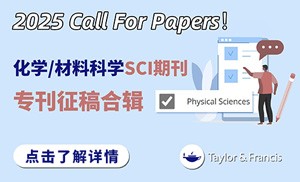


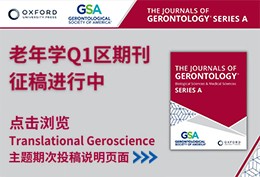
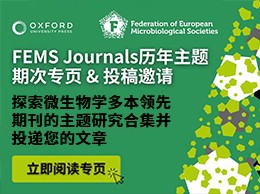
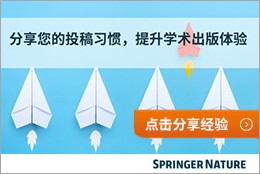




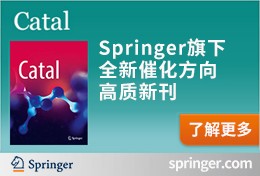
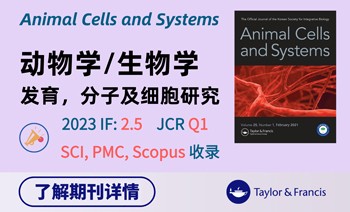






















 京公网安备 11010802027423号
京公网安备 11010802027423号